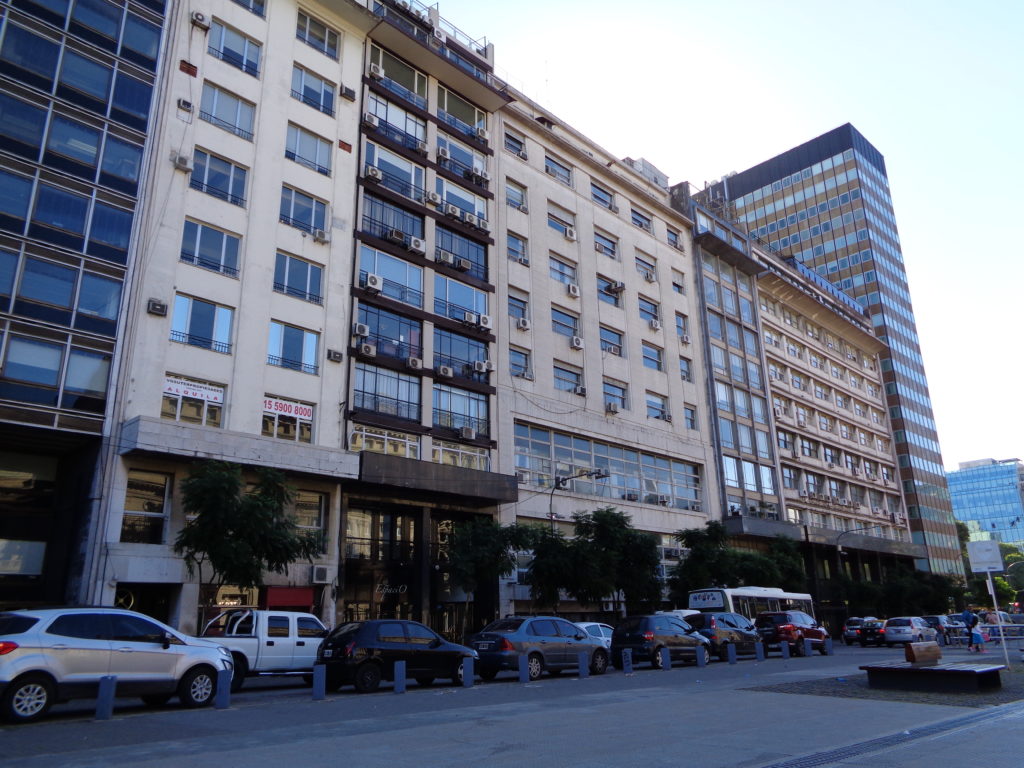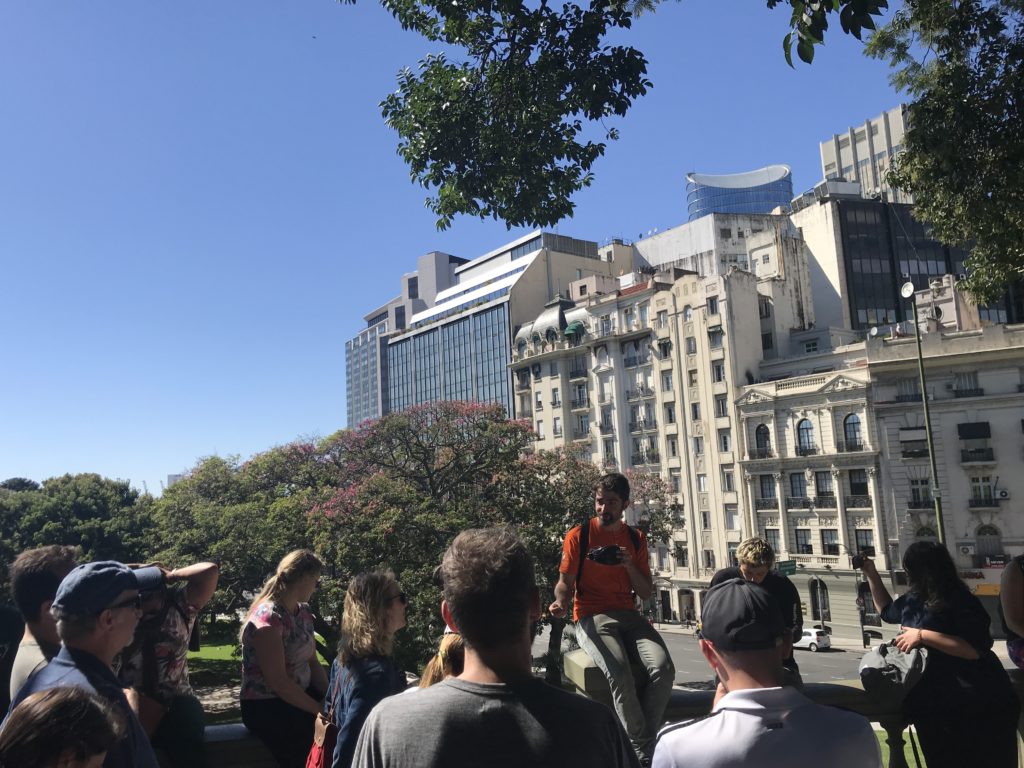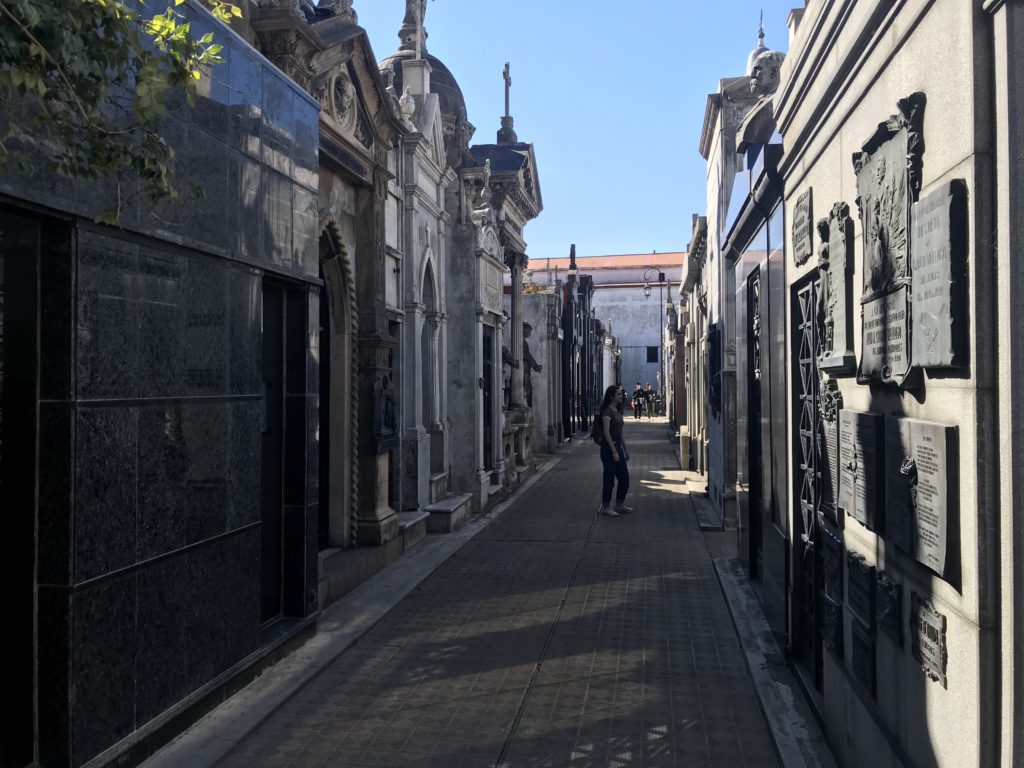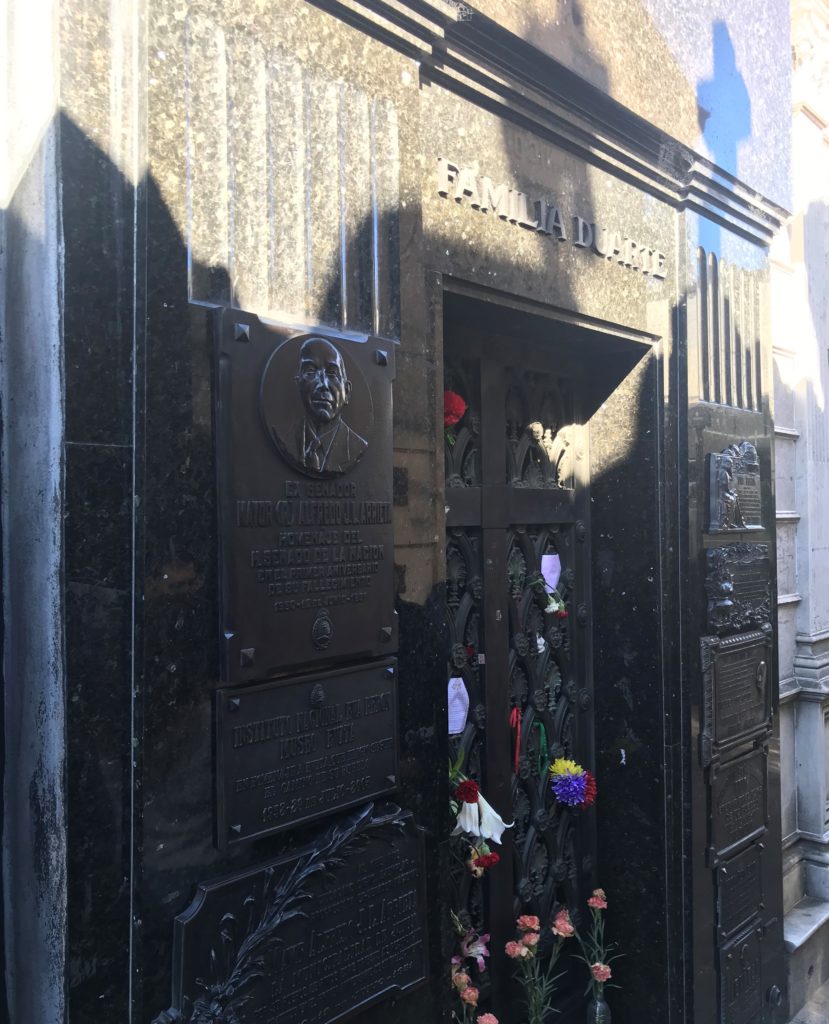Two days down, two to go. Our third day in Buenos Aires started very much the same as the last two, with a later morning at the hotel. As my daughter didn’t have any school to finish (yay, Saturday!), this meant sleeping in and enjoying a nice leisurely breakfast at the Hilton Buenos Aires. Well, sleeping in for her and leisurely for me. I was up for a couple hours with my computer in the lounge.
Looking back on our past couple days, I couldn’t help but think how quickly the time was passing. And we’d barely scratched the surface of the city. At least that’s how I felt. Our tour with Biker Street Buenos Aires the day before had been a ton of fun, and I hoped to immerse ourselves in more history through a walking tour. I was sold on the idea of a free tour, so we planned to show up at the Free Walks Buenos Aires 10:30 tour of Recoleta and Retiro.
History Told Through Architecture
Buenos Aires has nearly 500 years of history, roughly 300 years under Spanish control and then 200 years as independent Argentina. While this isn’t anything compared to places in Europe, it s more than virtually any city in the United States. Our walking tour would focus on primarily the latter period, after Argentina had won their independence from Spain in 1816. If you are interested in more of the details of Argentina’s colonial period and fight for independence, I highly recommend visiting the Cabildo at Plaza de Mayo.
Argentina had its “golden age” starting in 1880 and lasting into the early 1900s. The vast majority of the public buildings were built between 1880 and 1910, when the Argentinian economy took off. There was an ongoing mass rejection of colonial architecture and style, a reminder of the past. The model for the city’s renaissance was very European, which leads to some lovely structures. But it is a bit of a travesty that there are only a handful buildings surviving from the colonial period.
However, the design of the city was haphazard and the vision was inconsistent, leading to the varied cityscape we see today. Architectural design is the forte of the guide who led our tour, and this was the lens through which he told the story of Buenos Aires and Argentina. That may sound boring to some, but I cannot recommend Juan from Free Walks Buenos Aires (REVIEW) highly enough.
Consider the park (Plaza Lavalle) near where our tour started. One corner contains an art nouveau building that was partially saved when the rest was demolished and a modem office building constructed attached to it. I’ve never seen anything like it.
In Juan’s opinion, the irregularity and unpredictability in the urban planning should be celebrated, not disdained, as it tells the story of his city. Many times he has seen people trying to snap a photo of a particular building while excluding the one next to it from the photo entirely. A neoclassical school attached to a concrete apartment that might as well say “welcome to the Soviet Republic of Argentina” is not something you’ll see everyday. This is Buenos Aires.
A City of Immigrants
Argentina heavily promoted immigration through its golden years, and the promise of better living and no wars drew many from Europe. The Italians and Spanish made up the bulk of immigrants, although people from England, Ireland and other countries were drawn to this land of opportunity. Argentina profited during the first world war by remaining neutral, exporting their vast resources to both sides of the conflict. Investment in infrastructure and agricultural paid enormous dividends for the blossoming country. Argentina ad the sixth highest GDP in the world in 1914.
As we wound into the northern districts of Retiro and Recoleta, we continued to learn about the interesting history of this eclectic city. Eventually our guide stopped at the foot of a very interesting building.
This art deco landmark is the original skyscraper of Buenos Aires. It is the first reinforced concrete structure of any considerable height. In a survey of Buenos Aires residents, the Kavanagh Building managed to capture two titles. It is both the favorite building in Buenos Aires and least favorite building in Buenos Aires.
It was at or stop after the Kavanagh skyscraper that I finally understood why the Buenos Aires metro runs “backward”. The country’s rail system was developed by the British. They had begun investing in Argentina even prior to its golden age. Thus, you have trains that run as left hand traffic and cars that drive on the right. It confused me greatly during our first day.
Our guide provided an introduction to the Falkland Islands’ conflict in front of the Monumento de los Caidos en las Malvinas. Interestingly, our Argentine guide considers the attack on the Falklands as something shameful. The war was started by an Argentine military dictator as both a distraction from economic suffering an a rallying point for Argentine patriotism. While the war ended quickly, the Argentinian government still maintains the story that the islands were stolen by the U.K.
From the memorial we crossed Avenida 9 de Julio. This broad boulevard was created by a military dictatorship that wanted a north-south artery through Buenos Aires after 1930. The increase of cars started making traffic a problem. Many beautiful mansions were destroyed for its creation. But this one, now the French Embassy, was left intact.
We also made a stop at the former Embassy of the State of Israel, the site of the first terrorist attack on Argentinian soil. You can see the ghostly outline of the former building which has been specifically added to the facade of the adjacent structure as part of the memorial.
We really put the walk in walking tour. Juan led us at a leisurely pace with sufficient stops and places to sit, but it was still too much for my daughter. There may or may not have been a little carrying of my 12-year-old.
Exploring Recoleta Cemetery
The Free Walks northern city walking tour ends about 100 meters from Recoleta Cemetery, making this the perfect chance to check out this final resting place of numerous famous Argentinos. Multiple presidents are interred here, as well as many artists and writers.
It is a beautiful cemetery, the nicest I’ve ever seen. The majority of the family mausoleums are kept up very well, and the whole cemetery is laid out in blocks, much like city streets. If exploring cemeteries appeals to you, it’s definitely worth a visit while in BA.
One of the most famous Argentines interred at Recoleta is Eva Perón (nee Duarte). Evita, as you are more likely to know here (thanks to Andrew Lloyd Webber), was a champion of women’s suffrage in Argentina in the 1940s and beloved by working-class Argentinos. She would have likely had a continuing career in Argentina politics had she not tragically passed away from cancer at the age of 33.
Floralis Genérica
Our final stop for the afternoon was at the Floralis Genérica, a giant mechanical flower sculpture. It opens up every day and closes at night. it isn’t too far of a walk from Recoleta Cemetery.
By this point we were both tired and sweaty. April is the middle of Autumn in Argentina, but it felt like a warm summer day. At least a summer day for us on the mild northern California coast.
There is a metro station near the Floralis Genérica, which was our way back to Puerto Madero. After spending so many hours on our feet, the idea of walking all the way back to our hotel was more than either of us could handle.
Conclusion
After a 3.5-hour walking tour, I owed my daughter ice cream. She’d been a trooper. I’d pushed her hard. This was one of the activities that was more for me than her. I do try to balance the time when we travel between cultural and historical experiences versus down time and plain ol’ fun. She had a blast back in the pool that evening with our friends.
If I had to offer one piece of advice for a visit to Buenos Aires, it would be to take either a walking tour or bike tour (or both!) in your first couple days. What you’ll learn about the history and culture will really add to the rest of your visit. The walking tour was particularly interesting and my favorite activity from the trip. Our following day would be the most enjoyable on the whole, as we spent it with our newfound Irish friends (SEE: The Unexpected Best Part of Our Trip to South America).
But if I had to pick one activity to do again, it would be the free walking tour. Our third day in BA was truly excellent. Here are the previous two days, in case you missed them:























